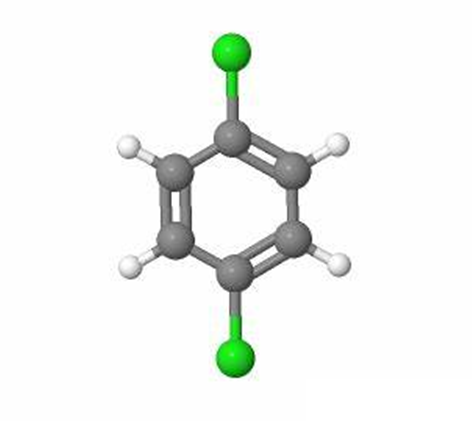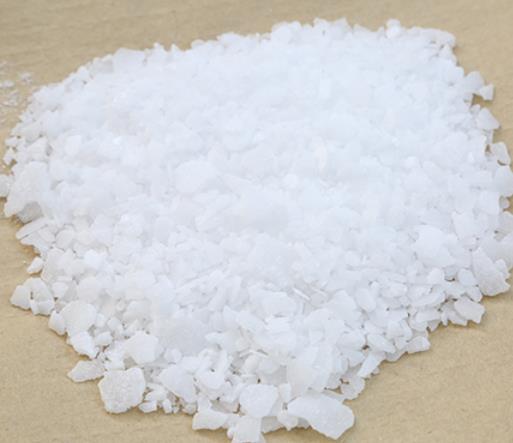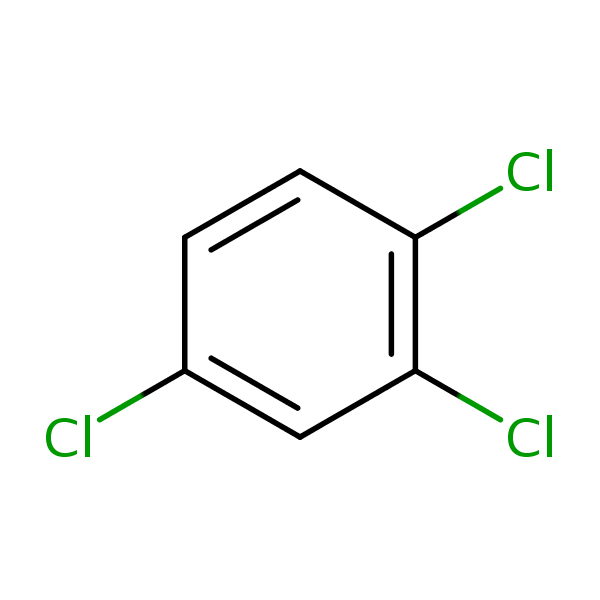1,4-Dichlorobenzene: Uses and Hazard
1,4-Dichlorobenzene is a colorless to white flammable crystalline solid at room temperature that slowly evaporates when exposed to air. 1,4-Dichlorobenzene has a penetrating odor similar to that of mothballs. 1,4-Dichlorobenzene is partially soluble in water and is soluble in organic solvents including alcohols, ether, benzene, chloroform, and carbon disulfide. 1,4-Dichlorobenzene vapor concentration ranging from 6.2 to 16% in air are explosive in presence of an ignition source. 1,4-Dichlorobenzene can be toxic when decomposed by heat. Dichlorobenzene vapor concentration ranging from 6.2 to 16% in air are explosive in presence of an ignition source.

When 1,4-Dichlorobenzene decomposes thermally, toxic hydrogen chloride gas is produced, which is a severe lung irritant.1,4-Dichlorobenzene should be stored at ambient temperature in a well-ventilated area away from sources of heat and ignition, such as smoking and open flames.1,4-Dichlorobenzene should be stored in a well-ventilated area away from sources of heat and ignition, such as smoking and open flames.
Uses of 1,4-Dichlorobenzene
1,4-Dichlorobenzene (1,4-dichlorobenzene) is produced by the reaction of liquid benzene with gaseous chlorine in the presence of a catalyst at moderate temperatures and atmospheric pressure.1,4-Dichlorobenzene is mainly used as a space deodorizer for toilets and garbage containers, and as a fumigant for the control of moths, molds, and mildew.1,4-Dichlorobenzene is also used in the production of polyphenylene sulfide (PPS) resins as an intermediate in the production of other chemicals (e.g., 1,2,4-trichlorobenzene) and for the control of blue mold and tree moths and ants in tobacco seedbeds. 1,4-Dichlorobenzene is also used in the production of polyphenylene sulfide resins, as an intermediate in the production of other chemicals (e.g., 1,2,4-trichlorobenzene), and for the control of blue mold and tree borers and ants in tobacco seedbeds.
Benzoylation of 1,4-dichlorobenzene
A method for preparing isomerically pure 2,5-dichlorobenzophenones in good to high yields is provided.The invention comprises Friedel-Crafts aroylation of 1,4-dichlorobenzene using an aroyl halide or aromatic anhydride and at least one Lewis acid, the latter being present in an amount of at least about 1.1 mole per mole of aroyl halide or aromatic anhydride, preferably about 1.5 moles per mole of aroyl halide or aromatic anhydride and,more preferably,from about 2 to about 2.5 moles of Lewis acid per mole of aroyl halide or aromatic anhydride.Preferably,the molar ratio of 1,4-dichlorobenzene to aroyl halide ranges from about 1.2:1 to about 8:1.
Hazard of 1,4-dichlorobenzene
1,4-Dichlorobenzene is irritating to the eyes and respiratory tract. Acute inhalation or oral ingestion of high concentrations of 1,4-dichlorobenzene may cause liver damage. Repeated ingestion of products such as mothballs, which consist primarily of 1,4-dichlorobenzene, can cause skin blotches and anemia. Lifetime inhalation and oral administration of 1,4-dichlorobenzene to mice resulted in liver cancer.
References:
[1] RAMAKRISHNA R. Benzoylation of 1,4-dichlorobenzene[C]. 2013. DOI:10.1039/SP584.
Related articles And Qustion
See also
Lastest Price from 1,4-Dichlorobenzene manufacturers

US $0.00/kg2025-11-21
- CAS:
- 106-46-7
- Min. Order:
- 1kg
- Purity:
- 98%
- Supply Ability:
- 1000kgs

US $1.00/kg2025-04-21
- CAS:
- 106-46-7
- Min. Order:
- 1kg
- Purity:
- 99%
- Supply Ability:
- 10 mt



